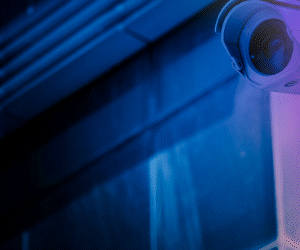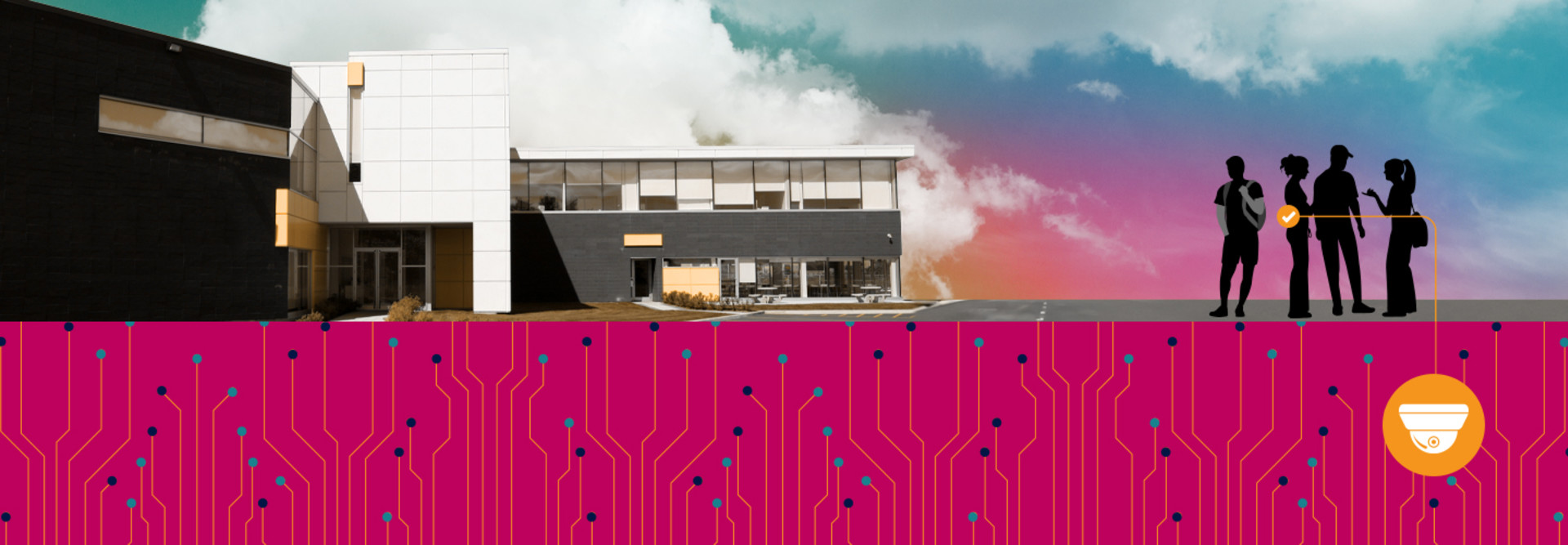The days when security video consisted of grainy, low-resolution images stored on VHS tapes are long gone. What has replaced those old, black-and-white and color cameras are devices capable of recording high-definition video — in some cases, at 4K resolution — capturing more detail than ever before.
This has led enterprises, including universities, to employ intelligent video analytics, also known as enhanced video surveillance. Because of the amount of detail and preponderance of data collected by video cameras around campus, universities have deployed back-end systems that not only analyze what’s on the video but also allow security and IT personnel to find footage using a database-like search.
“In North America, there are often concerns about safety in schools. There’s a lot of investment in cameras for safety or as a component of a safety plan. That’s often the driver of the conversations,” says George Bentinck, senior director of product management for IoT and edge intelligence at Cisco Meraki. Bentinck’s group designs systems consisting of high-definition cameras and environmental sensors for enterprise customers, including colleges and universities.
What he’s found is that, with relatively few security or law enforcement officers patrolling campuses, these institutions are using cameras and sensors to gather as much information as possible.
“They have to deal with various things that happen, like investigating general crime. There might be a large assembly of people or protests or things that they want to be able to monitor and manage, and it’s over a very wide space,” says Bentinck of one university client that doesn’t have a concentrated campus in its city. “So, you’ve got the investigative piece — where they’re trying to work out what happened retroactively, across maybe 600 cameras — then also what’s happening now, and if they can use that information on the go. So, there’s often a focus on how we can provide these tools in a way that’s easy for them to access.”
Click the banner below to explore more solutions for keeping campuses safe.


Intelligent Video Surveillance Requires the Right Tools
The 1080p and 4K UHD cameras that schools now deploy can show detail from much greater distances than lesser cameras that once were the standard.
“You have cameras that provide context, so they cover a very wide amount of space, like an entire street. Then you need cameras that are much more zoomed in, or have very close views of people or objects,” says Bentinck. He cites a metric of 40 pixels per foot as the standard for being able to see details like a person’s face or a car’s license plate. The higher the resolution a camera can record, the further away it can be to achieve that kind of detail.
Such detail allows campus security to use camera analytics. For instance, Georgia Southern University implemented an intelligent video surveillance system earlier this year that records the license plate numbers of every car going into a parking lot belonging to the institution. It also allows security personnel to search details such car make and model, plate number and state, and whether the car has a temporary tag or even no tag at all.
Bentinck shares how such footage might be used: “Let’s say someone said, ‘I have a dent in the back of my truck. I think someone reversed into me and drove off.’ Security can search video of the area where the truck was and then start filtering down the number of events. They can say, ‘I only want video returned that has people or people with vehicles,’ and now suddenly you’ve gone from thousands of events to hundreds of events to tens of events.”
Using Cisco’s application programming interfaces, third-party applications could make the search even more granular, filtering by form factor (truck versus car), color or license plate number.
In other cases, video analytics can show where crowds gather and establish foot traffic patterns. For campuses, this usually comes into play with large gatherings, but Bentinck cited a customer that wanted to learn about traffic flow in the library.
“The primary purchasing decision is that they’re buying it for security,” he says about why his customers buy the camera systems. “But during the evaluation process, the fact that these other things are possible is very interesting to them and shows how this could be used for more things that could add value.”

The Infrastructure Behind Intelligent Video Surveillance
This kind of detail requires an infrastructure that can handle the large video files produced by these cameras. With the Cisco cameras Bentinck works with, the data is stored in-camera, and the analytics and APIs also run at the device level.
“You could think of our cameras as high-end smartphones,” he says.
When institutions need to export video from an incident, that data will be stored in the cloud for a year, Bentinck says. The video will be watermarked with the date and time, and will include a cryptographic checksum to ensure the footage’s authenticity.
Other manufacturers such as Hewlett Packard Enterprise design systems that include edge servers to store camera data; servers and second-tier storage for analytics; and storage for archiving. A suite of video analytics software is available from HPE’s partners, each attuned to specific needs, whether that’s face recognition, license plate recognition, object recognition or anomaly detection.
Artificial intelligence is quickly making inroads in this area.
“AI is already improving situational awareness and real-time monitoring on campuses across the country,” writes Liam Galin, CEO of BriefCam, in an article for eCampus News. Galin thinks that AI can help fill observational gaps that a smaller security staff might miss.
“The technology holds enormous untapped potential,” he writes, “for also helping colleges and universities recognize and mitigate future risks, informing event planning and infrastructure investments with unbiased, accurate and quantifiable data.”
Getty Images: Onfokus (building), Natrot (pattern), A-Digit (people), Filo (icon)












